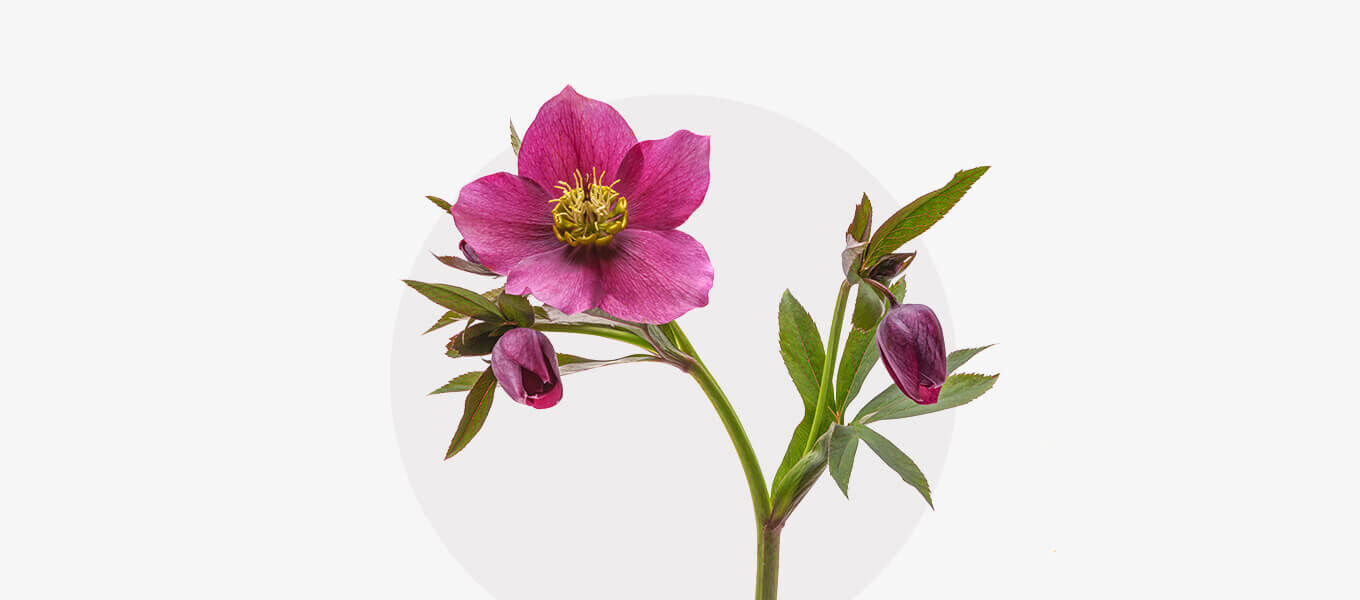Christmas rose (black hellebore)

From the grey of many a winter garden, it shines bright white from December onwards - the Christmas rose, a versatile and easy-care winter bloomer, defies the cold and delights us with its splendour. But beware: it is just as poisonous as it is beautiful.
Meaning
A simple shepherd set out to pay his respects to Jesus at his birth. As he was very poor, he had no gift for the newborn. Desperate, he began to weep. However, when his tears fell on the wintery earth, they grew into beautiful flowers. He gave them to the Christ Child as a gift, which is why they have been called Christmas roses ever since. A somewhat less poetic explanation for the most common name of Helleborus niger can be found in its unusual flowering period. This begins around Christmas and lasts until February. However, this versatile plant has more than just one name. Its winter flowering period and the colour of its flowers are reflected in the name "snow rose". The hardy flower shows its white blossoms even in the snow and can withstand temperatures down to minus 20 degrees. Its botanical name, Helleborus niger - from the Greek "hellein" ("to kill"), "bora" ("food") and the Latin "niger" ("black") - is due to its strong toxicity and its black rhizome. The latter is also the reason for the popular name sneezewort: if you rub the plant root and smell it, you sneeze.
Frugal beauty
For optimum vase life, cut the stems of the individual Christmas roses fresh with a sharp knife before placing them in water. This will prevent the veins from becoming blocked and the flowers from opening. Instead of placing the Christmas roses in a vase, you can also drape them decoratively in a bowl of water. To do this, simply cut the stems about one centimetre below the flower. You can also bring the Christmas rose indoors in a pot. As the plant's root system spreads out, the pot should be suitably high and wide. Christmas roses are sensitive to waterlogging. This is why they absolutely need drainage. This can easily be created from a layer of pebbles and a piece of broken clay. Place the shard over the drainage hole in the pot to prevent it from clogging. Then place the pebbles between the bottom of the pot and the potting compost as a drainage layer. Once the flowers have faded, you can transplant the Christmas rose into the garden. It prefers a spot in partial shade, ideally under deciduous shrubs. The soil should be well-drained, loamy and, above all, calcareous. Once planted, the Christmas rose is very easy to care for. You can leave the fallen leaves from the surrounding trees; they will serve as mulch in winter. You should only cut off the wilted leaves of the Christmas rose from time to time.
Dangerous beauty
The Christmas rose was already known in ancient times and, despite its toxicity, was used as an extremely versatile medicinal plant. As well as being used as a diuretic and laxative, it was also used as an emetic. Paracelsus described how the dried leaves of the Christmas rose could be used to make an elixir which, in the right dosage, was (paradoxically) said to have a life-prolonging effect. Christmas rose was also used as a medicine for epilepsy and mental illness. According to the four juices doctrine, which demanded a balance of the body's own juices as a prerequisite for health, these were caused by an excess of black bile. The best way to get rid of this was to sneeze vigorously. As the powder from the rhizome of the Christmas rose causes sneezing, the plant was considered to be particularly effective. However, the fatal consequences of an overdose were not unknown even then. Even today, Christmas rose is used in alternative medicine to treat various ailments. The main areas of application are the central nervous and cardiovascular systems as well as the kidneys and gastrointestinal tract. Due to its strong toxicity, however, the Christmas rose is only used in homeopathy in a highly diluted form.













